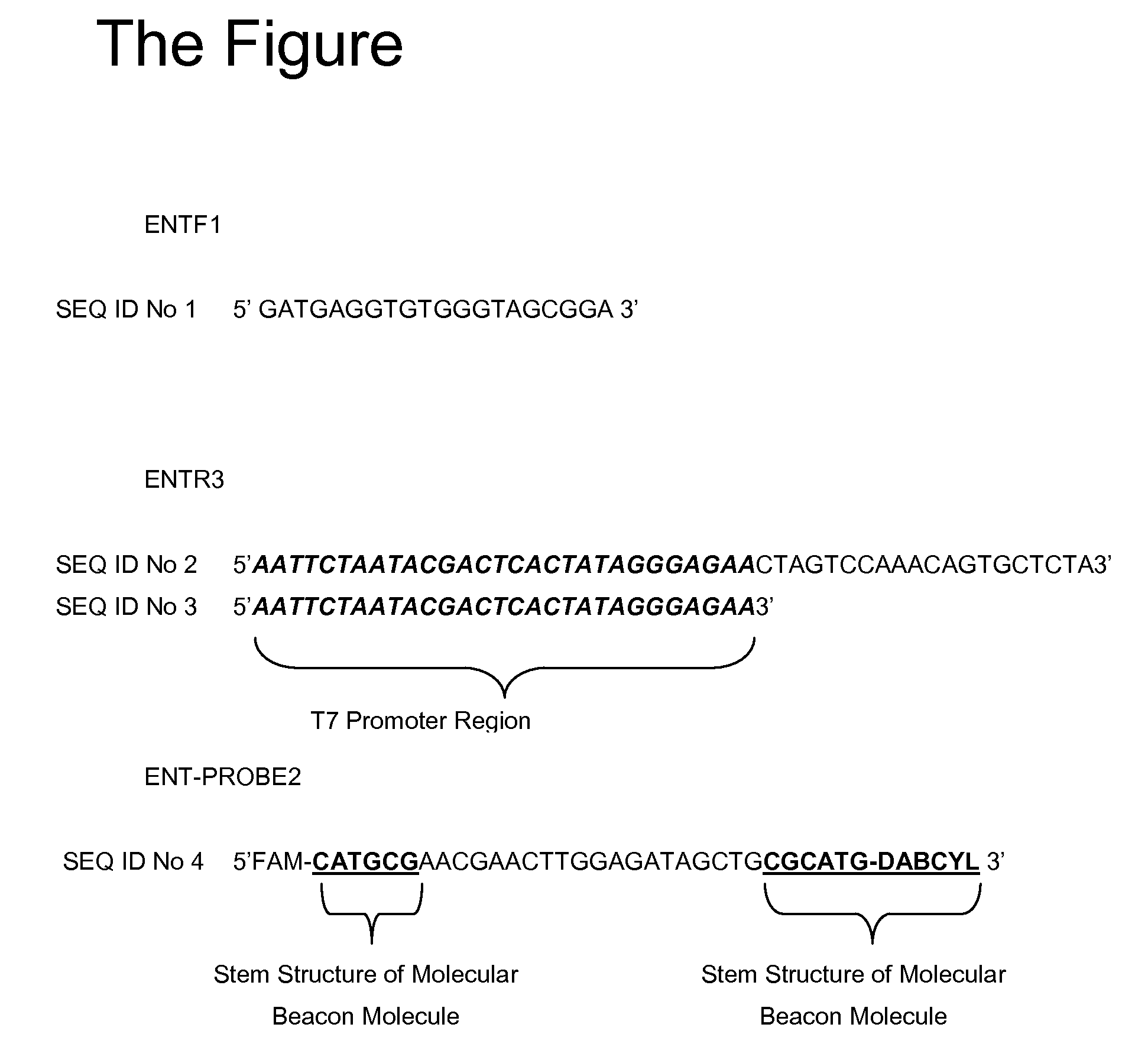Molecular detection and quantification of Enterococci
a technology of enterococci and detection methods, applied in biochemistry apparatus and processes, organic chemistry, sugar derivatives, etc., can solve the problems of fecal contamination outbreaks, lag of at least 24 hours, management decisions and public notifications that are often times moot, etc., to ensure the safety of these resources and improve management abilities
- Summary
- Abstract
- Description
- Claims
- Application Information
AI Technical Summary
Benefits of technology
Problems solved by technology
Method used
Image
Examples
Embodiment Construction
[0009]NASBA primers and probes were designed based on homologous regions of the large subunit ribosomal RNA gene (The FIGURE). This region is highly conserved within all reported species of the Enterococcus genus (Haugland et al., 2005). Previous researchers (Frahm and Obst, 2003) used this region as the priming site for the development of a Taqman PCR assay for enterococci detection. The primers have been modified to best fit the NASBA amplification requirements and molecular beacon design criteria as well as minimize the cross hybridization to each other. This primer set has been tested against Enterococcus faecalis and E. faecium, and E. avium, as well as several other genera of Gram positive and Gram negative bacteria to determine the specificity of the assay and ensure that no cross reactivity occurs to non-target organisms. Data thus far indicate that the primer set is specific to the genus enterococci.
[0010]The assay sensitivity has been evaluated using serially diluted RNA i...
PUM
| Property | Measurement | Unit |
|---|---|---|
| volumes | aaaaa | aaaaa |
| volume | aaaaa | aaaaa |
| concentrations | aaaaa | aaaaa |
Abstract
Description
Claims
Application Information
 Login to View More
Login to View More - R&D
- Intellectual Property
- Life Sciences
- Materials
- Tech Scout
- Unparalleled Data Quality
- Higher Quality Content
- 60% Fewer Hallucinations
Browse by: Latest US Patents, China's latest patents, Technical Efficacy Thesaurus, Application Domain, Technology Topic, Popular Technical Reports.
© 2025 PatSnap. All rights reserved.Legal|Privacy policy|Modern Slavery Act Transparency Statement|Sitemap|About US| Contact US: help@patsnap.com

